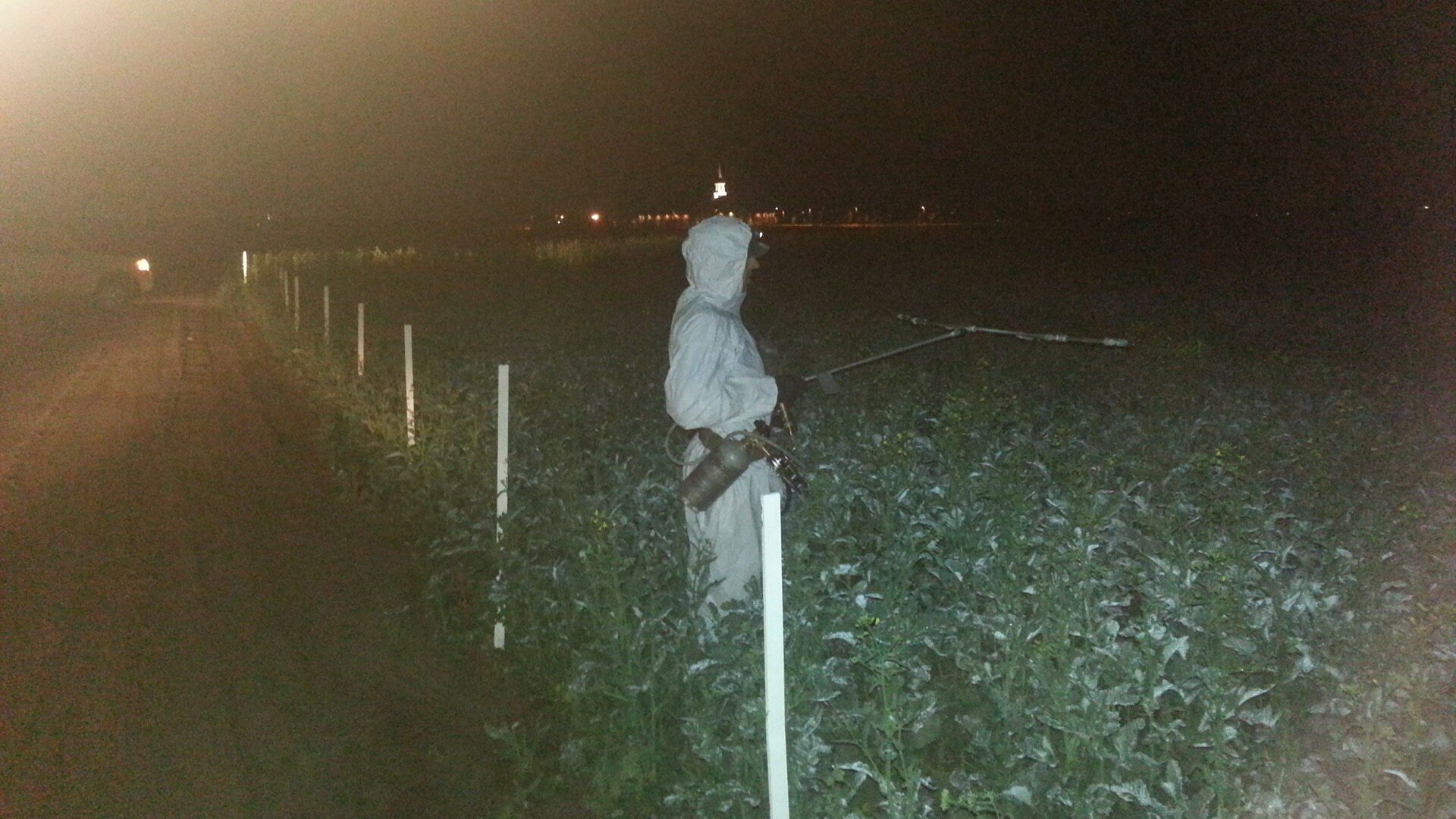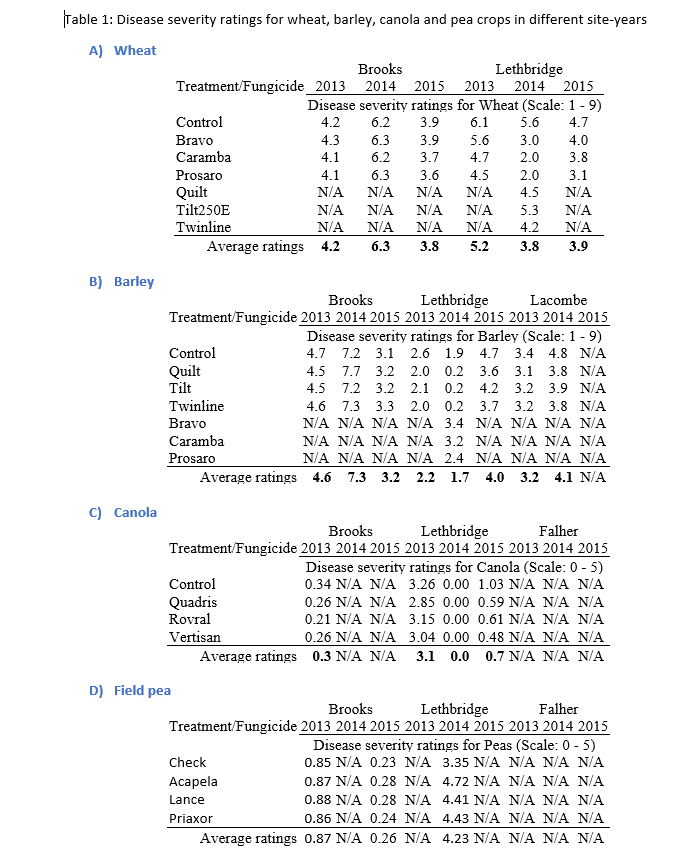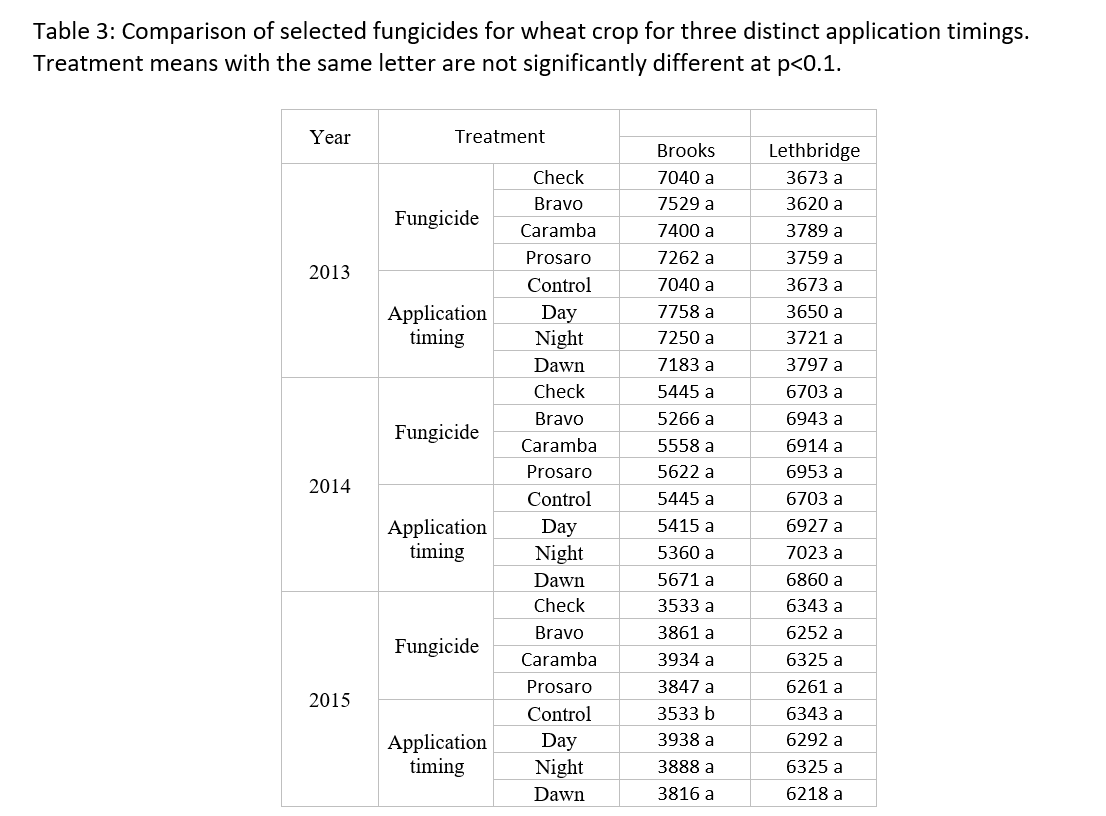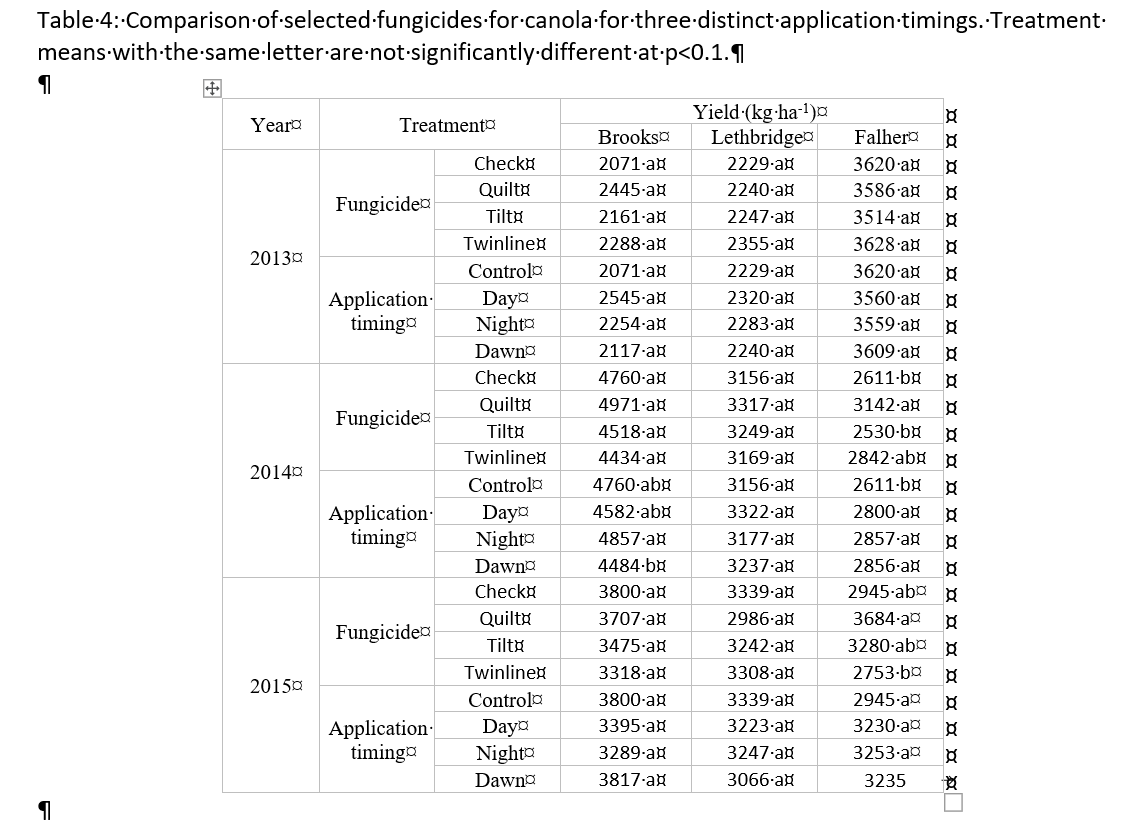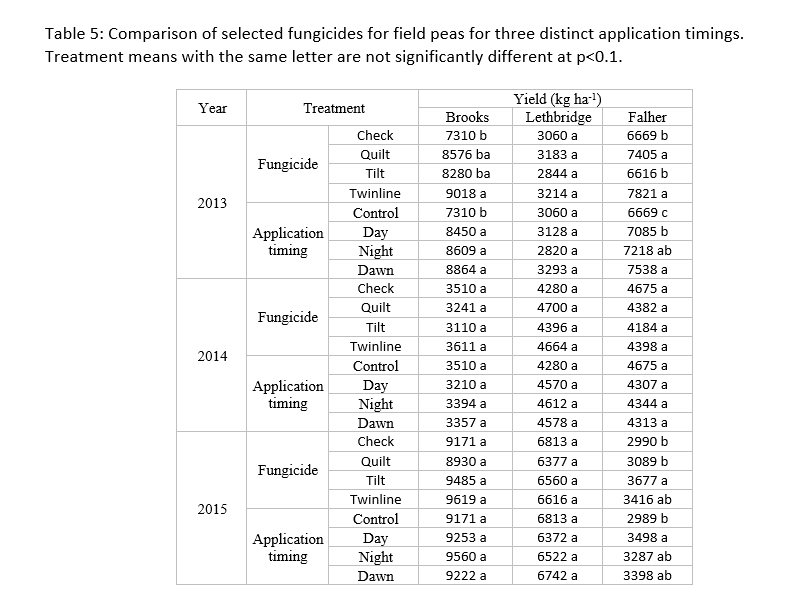Project AbstractApplication timing can significantly alter pesticide effectiveness. However, because of Alberta's short growing seasons, growers often juggle weather conditions, environmental consequences and economic considerations when choosing pesticide application timing. Due to these practical considerations, they sometimes stretch the recommended boundaries of application conditions to farm more acres using the same equipment. This study examined night and dawn time applications as an alternative to the daytime spray application. Poor day time conditions, such as hot and windy conditions, can greatly reduce fungicide efficacy. Because, producers rely on pesticides, especially under zero-tillage systems, any reduction in chemical efficacy can quickly diminish financial returns on investment particularly in Alberta's short growing season. Because of cooler temperatures, less wind, higher humidity and lower evaporation potential, night and dawn time applications may improve application efficacy due to greater absorption and provide a feasible alternative to poor daytime conditions. However, limited scientific research and huge knowledge gaps exist in this area. |
|
||||||||||
|
This project addresses this knowledge gap and determines if night or dawn time spraying offers any real potential. Our results suggest that fungicides applied during the day, night or dawn time would be similarly effective on barley, wheat and canola, with some advantage of dawn or nighttime applications for peas. The study could not maximize differences statistically between the treatments due to the low disease pressures, and thus, further research can verify these results. Our study also clearly showed that crops are not likely to respond to fungicide applications under low disease pressures and will most likely maintain yield potential close to the pre-disease level. Therefore, producers could avoid unnecessary fungicides expense under low disease severity without facing the risk of losing any yields while saving time, financial resources and the environment. These results agree with several other researchers who recommend using fungicides only when damage to crop is critical and significant yield loss potential is eminent. |
|||||||||||
Project ObjectivesThe main study goal is to provide detailed information from a systematic, science-based approach on the effects of night spraying using fungicides currently registered in Alberta on common cereal and canola diseases. The specific objectives:
|
||||
Methods |
|||||||
|
We conducted randomized, split-plot design small plots trials with four replicates consisting of approximately five fungicide treatments with different modes of action, three spray timings (dawn, noon, midnight) and two water volumes/and or nozzle types. Research plots were established at four locations each year, Farming Smarter Association (FS) site in Lethbridge, Crop Diversification Centre (CDC) South in Brooks, Agriculture and Agri-Food Canada (AAFC) Centre in Lacombe and at Smoky Applied Research and Demonstration Association (SARDA) in Falher, Alberta. Four crops, barley, wheat, canola and peas, were used. However, not all four crops were tested at each location. All trials were designed as randomized split-plots with four replicates. Measurements
|
|||||||
ResultsThe major findings from the study are listed below ≥ Severity of fungal diseases remained low for all crops and across all locations during the 3-year study period as shown in Table 1. The disease severity ratings suggested that, on average, disease pressure was low for all crops.
Crops yields were not affected statistically significantly by fungicides. By extension, it means that under low levels of disease conditions, producers could avoid using fungicides without losing any yield potential while saving time, financial resources and the environment. For barely, daytime was the least effective application timing at all locations (Table 2). Dawn applications at Brooks were most effective (56% of the instances) for producing higher yields compared to the day and night times that both scored at 44%; Nighttime application was most effective at Lethbridge at (67% of the instances) compared to the day and dawn timings (scoring 50% each); Night applications also scored higher yields at Lacombe (83% of the instances) followed by the dawn time (67%) and day time (33%). Twinline was, in general, the most effective fungicide for barley (Table 2).
In case of wheat, no application timing seemed clearly effective, and there was lack of statistically significant differences in wheat yield for different treatments (Table 3). In general, the dawn time application was less effective than daytime or nighttime applications, both of which were equally effective. However, the differences were not statistically significant in terms of yield differences. For canola, daytime application was most frequently effective at Lethbridge and Brooks (78% and 67%, respectively) followed by the night and dawn times, respectively (daytime > nighttime > dawn time); Dawn time scored better at Falher in 56% of the instances compared to 44 and 33% for day and night times, respectively (Table 4). Quadris was, in general, the most effective fungicide for canola (Table 4).
In case of field peas, the dawn time and nighttime applications were more effective than day time applications. The trend of higher pea yield for dawn time and daytime applications was consistent across site-years; however, statistically significant differences in yield were observed only at the Falher site. The likely explanation of such diurnal trends of fungicide effectiveness may be that pea canopy structure and the diurnal folding of leaves in the absence of daylight allowed deeper fungicide penetration with increased fungicide residual activity within the bottom canopy. Priaxor was, in general, the most effective fungicide in case of peas (Table 5).
In general, our study results suggest that fungicides applied during the day, night or dawn time would be similarly effective on barley, wheat and canola, with some advantage of dawn or nighttime applications for peas. However, because of low disease pressure, the study could not maximize the differences between treatments. |
||||||
RecommendationsThe study suggested that fungicides applied during the day, night or dawn time would be similarly effective on barley, wheat and canola, with some advantage of dawn or nighttime applications for peas. However, more research may be needed to verify these findings since the study could not maximize differences statistically between the treatments due to the low disease pressures. The potential of nighttime application of fungicides would significantly expand the opportunity time window for the producers to avoid potential economic and environmental consequences resulting from the waiting for ideal conditions required for daytime application. This study also showed that crops are not likely to respond to fungicides applications under low disease pressures and are most likely to maintain their yield potential at disease free levels. By extension, it means that under low levels of disease conditions, producers could avoid using fungicides without losing any yield potential while saving time, financial resources and the environment. Because, costs of fungicides can substantially reduce profit margins, producers could avoid using fungicides under low disease pressures, without the risk of losing any yields while saving time, financial resources and the environment. Project video
|
||||

